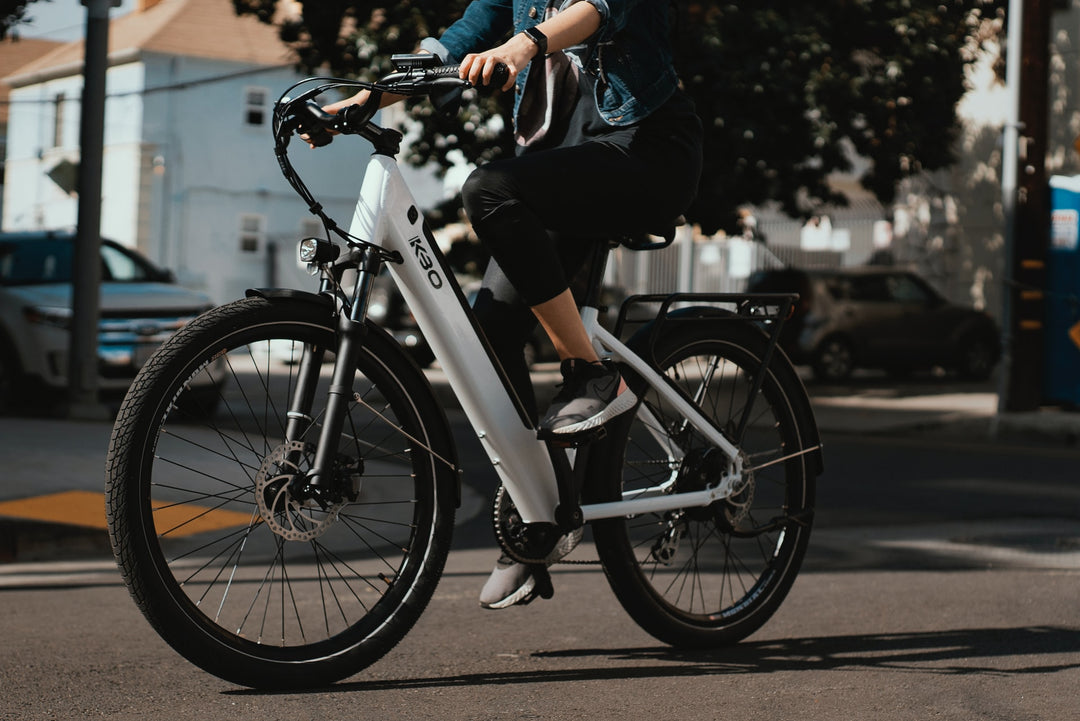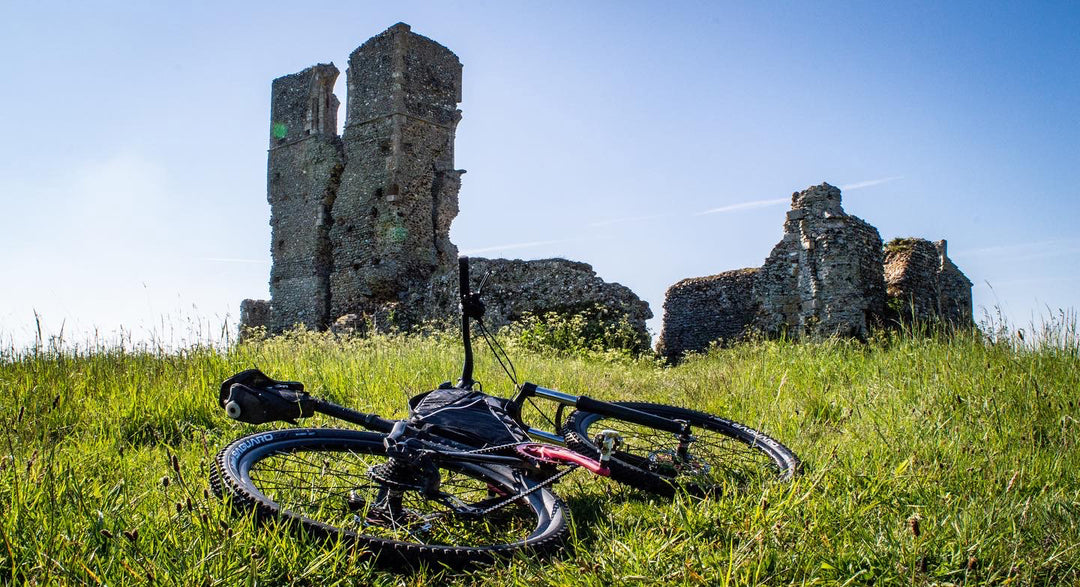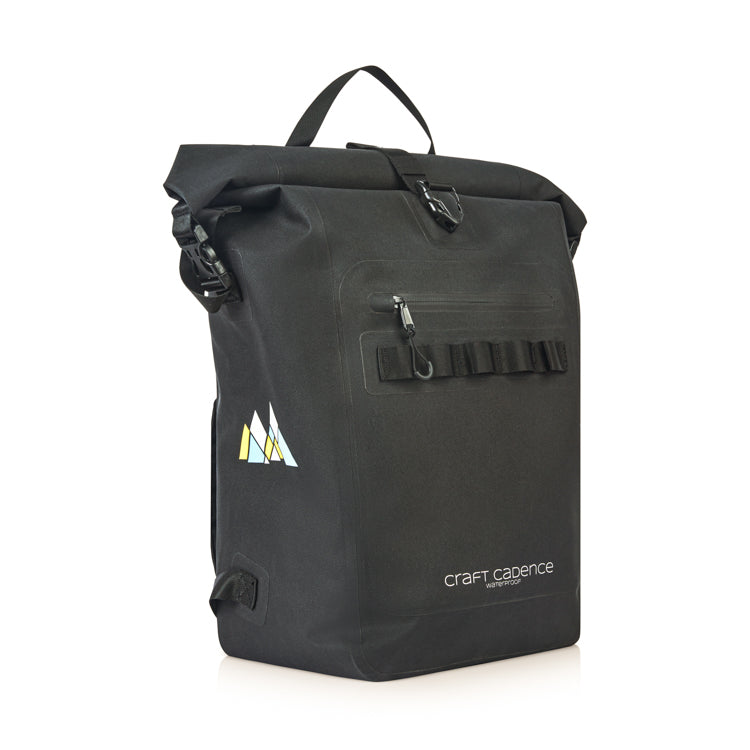What makes a great cycling jersey?
Cycling jerseys are an essential part of your cycling attire. Arguably they are one of the most useful cycling clothing items, so it is worth taking the time to understand what makes a great cycling jersey.
There are several features and factors that affect the quality and functionality of cycling jerseys. The composition of the fabric plays an important role. High-quality fabrics will have several different properties that make them more comfortable to wear while cycling. Such as the ability to wick away moisture, added antibacterial protection to keep your jersey fresh on longer rides and their ability to maintain shape after numerous washes and uses.
In addition to the fabric, you also need to consider the other features that the best cycling jerseys have. These include high-quality zips and zipper guards, additional rear pockets, hem and silicone grippers, improved ventilation and UV protection. Finally, the stitching and craftsmanship play a significant role in your comfort while cycling. You are likely to be wearing your cycling jersey for long periods, so high-quality stitching and clean seams help to make the best cycling jerseys last longer, as well as feel more comfortable against your skin.
Fabrics
Most modern cycling jerseys are made from technical synthetic fabrics. They bring together the best properties of elastane, polyester and nylon, to create great cycling jerseys that wick away sweat, stretch easily without losing shape, improve breathability and even water resistance or wind-blocking properties.
Here are a few of the main features of the most popular synthetic fabrics that make high-quality cycling jerseys. Some jerseys blend together the fabrics to make take advantage of the strengths of each.
Polyester
- Excellent at wicking away moisture. However, the quality can be highly variable due to the manufacturing process, So not all Polyester is the same (more on that below).
The fibres can be manufactured into different thicknesses, patterns and sizes. It is a strong fibre, but not as strong as Nylon.
Nylon (Polyamide)
- Soft to the touch, warm and strong fibres.
- Not as breathable and moisture wicking than polyester
- More expensive than polyester.
Elastane (Lycra)
- Adds stretchiness and quickly returns to original shape
- Too much Elastane and the material is not very breathable or comfortable.
As mentioned above, it is common for manufacturers to blend a combination of fabrics can make for a cycling jersey that is high quality, warm, moisture-wicking and retains its shape after multiple uses. The most common being polyester and elastane.
The intricate production of materials such as Polyester means that not all polyester is made to the same high quality. There are fabric producers all over the world; however, some are more well known than others due to their high-quality products and years experience in refining the perfect sportswear and fabrics. Fabric makers such as MITI and Carvico in Italy, are continually innovating and releasing high-quality fabrics that offer different characteristics. MITIs’ material can be found in a lot of the best cycling jerseys.
Merino Wool
You will also find cycling jerseys that have Merino wool within them. Although best when blended with synthetic materials, to get the best of both worlds, Merino wool has some excellent properties that are perfect for a cycling jersey. Merino wool is naturally very effective at wicking away moisture. It will keep you cool in the summer and warm in the winter (it even helps you to stay warm when wet). Merino wool is also naturally odour resistant and antibacterial. However, it is not as effective at preventing foul-smelling bacteria as some of the modern antibacterial treatments. These properties make Merino wool a firm favourite for underlayers rather than cycling jerseys (unless they are blended with synthetics).
Recycled fabrics
The production of all these materials boils down to the use, creation and manipulation of plastics. Thanks to consumers growing concerns about the impact of overproduction of plastics on the environment, a lot of the high-quality fabric manufacturers are offering recycled fabrics.
For example, Craft Cadence jerseys uses a special technical fabric that is created from salvaging plastic bottles from the ocean.

The fabric, certified according to Global Recycled Standard, when compared to the manufacturing of conventional / virgin polyester, mechanically-recycled polyester, per 1Kg of Woven Polyester fabric, results in:
- Approximately 62% less energy used
- About 99% less water used
- Up to 35% less waste created
- Upwards of 20% less CO2 emitted
Other essential features to look out for in high-quality cycling jersey
Zippers
The zipper that a cycling jersey comes with is an important feature. YKK and SBS are the two most popular manufacturers of zips. YKK has been around since 1934 and has become a staple for high-quality sports brands. SBS is relatively new to the market (still with over 30 years experience). SBS has lower production costs so they can sell their zips at a fraction of the cost of YKK. This makes them the go to zipper brand for mid-tier cycling jerseys; however, they have started making more high-quality zippers in recent years. YKK is still the most recognisable high-quality zipper on the market and will ensure that you are not left with a jersey that you can no longer wear because the zipper has broken.
Zipper Guards
Zipper guards are a staple on higher-end cycling jerseys. They provide a layer of protection against you catching your skin or hair when zipping up your jersey, in addition to removing the risk of any irritation or rashes caused by the zip rubbing against your skin during your ride.
Silicone Tape and Grippers for Hems and Sleeves
Cycling jerseys are engineered to fit your body while in a riding position. This means that the rear of the jersey and the sleeves should be longer than the average t-shirt. However, without a hem and silicone grippers, this improved design can be completely wasted.
A hem on the bottom of the jersey and the end of the sleeves will help the cycling jersey retain shape as well as keep it well-fitting and tight. Mid-tier jerseys typically have silicone tape on the polyester fabric around the back of the jersey. The high-end cycling jerseys use silicone grippers, where silicone is the fabric itself around the hems. The silicone creates friction against your cycling shorts and keeps the jersey in place, without it riding up your back while riding. Not only helping you to maintain your dignity, but it also makes it easier to access your rear pockets as they are kept towards the bottom of your back.
Silicone grippers on the arms of a cycling jersey is a nice touch as it will keep them in place, improving comfort. If you are wearing arm warmers, they also help to keep them up and prevent you from having to readjust while cycling.
Visibility
Cycling on the road can be dangerous; however, the addition of silver reflective strips on the back of high-end cycling jerseys will help you to be seen in low visibility conditions. Although you may have a reflective and high visibility coat, it is not always appropriate to wear it, especially during the warmer summer months. It is not an alternative having lights on your bike; however, it will catch the eye of motorists and fellow cyclists as they approach you.
Pockets
One of the most useful features of cycling jerseys is the pockets that they have at the bottom of the back. They allow you to carry snacks, valuables and even puncture repair kits so that you do not have to take a backpack on shorter rides. It is common to have three rear pockets. Higher-end cycling jerseys also benefit from the addition of an additional zipped pocket.
A zipped pocket is surprisingly useful. You can store valuables such as keys, credit card or cash, without having to fear them falling out when you pull something else out of the rear pockets.
Ventilation
The key to comfortably cycling in all weather conditions is to layer up. During the warmer summer months you will be going out in just your jersey, or maybe have a thin underlayer underneath. The best cycling jerseys come with ventilation built into their design. This ventilation will help to keep you cooler and reduce how much you sweat.
The ventilation is usually under your armpits and on the sides of the jersey. This comes in a few different forms, either a unique blend of materials that allows more air to flow through the fabric and cool your skin or the use of mesh to create more gaps in the fabric to aid airflow.
UV Protection and antibacterial properties
Cycling is an outdoors sport; you will be exposed to the suns potentially harmful rays for hours at a time. You may already use sunscreen for your exposed skin. However, not all clothing offers the same amount of UV protection. Higher end cycling jerseys are made of fabrics that provide UV protection, which gives you an extra layer of protection if you are out in the saddle for hours.
No matter how fit or experienced you are, all cyclists sweat while out on the bike. This can cause a build-up of bacteria on your cycling jersey resulting in some nasty odours. Some top tier cycling jerseys will come with antibacterial properties, that will prevent the bacteria from building up and will keep your jersey smelling fresher for longer.
Stitching and craftsmanship
As with most products, the devil is in the detail when it comes to cycling jerseys. A great cycling jersey will have high-quality stitching and craftsmanship. A high level of craftsmanship usually comes from experience, thorough quality control and detailed research and development. Manufacturers of high-quality cycling jerseys will also provide excellent customer service as they are 100% confident of the quality of their jerseys.
Conclusion
New and improved cycling jerseys are constantly being developed thanks to continued research and development. A great cycling jersey should have a high-quality blend of synthetic materials that makes the jersey moisture-wicking, stretchy (without losing shape), soft and comfortable to wear. The addition of UV protection and antibacterial properties are added bonuses of higher-end cycling jerseys. Other features to look out for are ventilation, silicone grippers at the bottom of the jersey, reflective strips for increased visibility, rear zipped pockets (in addition to the standard three pockets), high-quality YKK zips (with a built-in zipper guard) and quality stitching to prevent irritation.
It is important that you find the right cycling jersey for you. Think about the weather conditions and temperature you are going to be cycling in. Invest the time to do some research and do not forget about environmentally friendly options as well.
What is the most important feature of a cycling jersey for you? Do you buy more than one of the same type of cycling jersey? Or do you have a few different brands that choose you from?
A note regarding Craft Cadence jerseys
Craft Cadence’s jerseys have been designed not to compete with high end jerseys by the established brands (which are great, by the way), but to fill a specific niche in the market. It is a mid-tier jersey for:
- A commuter who wants to try out road cycling, who does not want a tight body hugging jersey
- The environmentally conscious cyclist, who wants both the performance and sustainability credentials of fabric certified by the Global Recycled Standard, made from recycled PET bottles, with full transparency of the origins of the waste materials and certification of the recycling process
- Useful details such as silicone grippers, zipped pocket, reflective strips, side ventilation and a zip guard, that you get from the major brands
Overall, a jersey that punches above its weight and is suitable for both commuting and weekend riding.



